If a loved one’s birthday is coming up and you’re running out of gift ideas, why not buy them a bouquet of flowers? To be more specific, buy them a bouquet of poppies!
Out of all the flowers available, the poppy is one of the most fascinating. This flower species was significant in some ancient civilizations, has been used as traditional medicine, and has even become a symbol during the Great War.
If you want to learn more about this flower, read on because this article provides you with everything you need to know about poppies. Afterwards, check out your local flower shop and buy poppy flowers for yourself or a loved one!
The Basics of Poppy Flower


Family: Papaveraceae
Sub-Family: Papaveroideae
Order: Ranunculales
Botanically speaking, the poppy flower is a flowering plant that falls under Papaveroideae, a subfamily under the Papaveraceae. Poppies are also herbaceous, which means they don’t have wooden stems.
The various species under this family can be annual, biennial, or short-lived perennial plants.
Annual flowers complete their life cycle in one growing season (which varies depending on the location). Meanwhile, biennial and perennial refer to plants completing their life cycles in two years and more than two years, respectively.
Some poppy flowers are monocarpic as well, which means they flower and set seeds only once before dying.
Moreover, poppies have flowers that can grow up to 15 cm across and over a meter tall. The usual number of petals is either four or six, and they come in a wide variety of colors and markings.
What’s the etymology of the poppy flower?
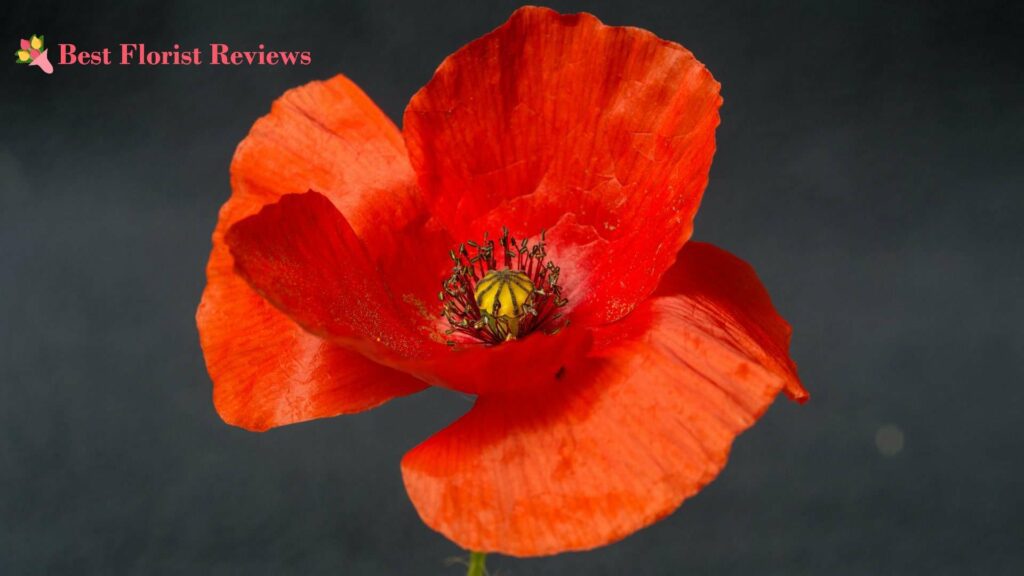

The etymology of the word poppy can be traced back to Old English. Poppy is believed to be a derivative of popig, an Old English word that’s a derivative of the Latin word papaver (meaning “to swell”).
It’s also possible that poppy is derived from pappa, which is the Latin word for milk. This is because when you cut a poppy flower, a thick latex sap that resembles milk is released.
What’s the history of the poppy flower?
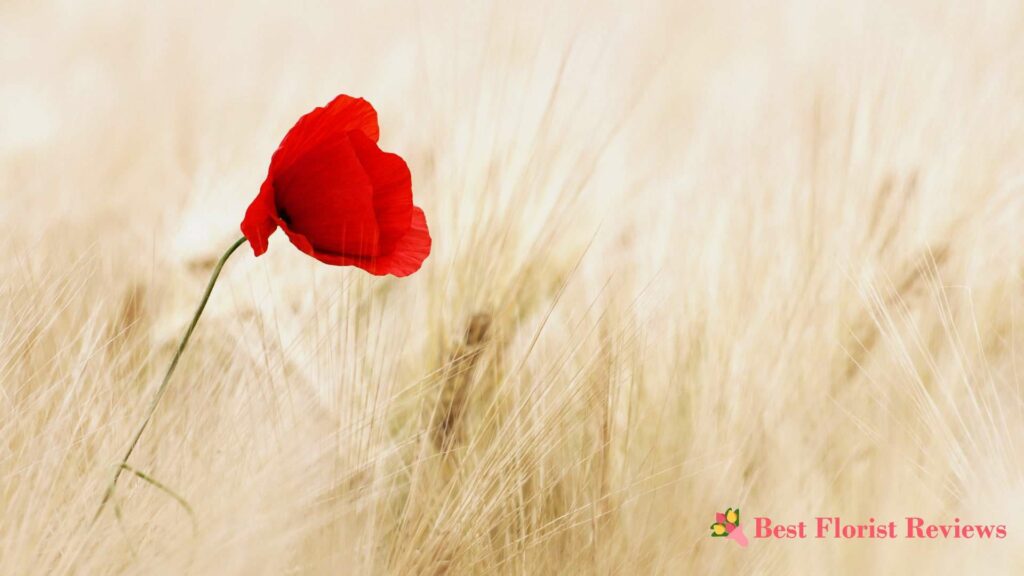

The poppy flower has long been a part of human history. In fact, the earliest references to using poppies can be traced back to the ancient land of Sumer in southern Mesopotamia (now Iraq and Kuwait).
It is believed that Sumerians grew and cultivated poppies thousands of years ago. Several pieces of artwork from this land featured poppy seed pods, usually in the hands of Sumerian rulers.
The reason why Sumerians grew poppies was mostly for medicinal and recreational uses. Eventually, they would start to trade poppy flowers with neighboring civilizations, such as Assyria and Ancient Egypt, and soon enough, demand in faraway regions grew.
It came to a point that poppies had become one of the most profitable products that were transported on the Silk Road. And though several civilizations and empires have come and gone, the poppy flower still persists to this day.
Where are poppy flowers native to?
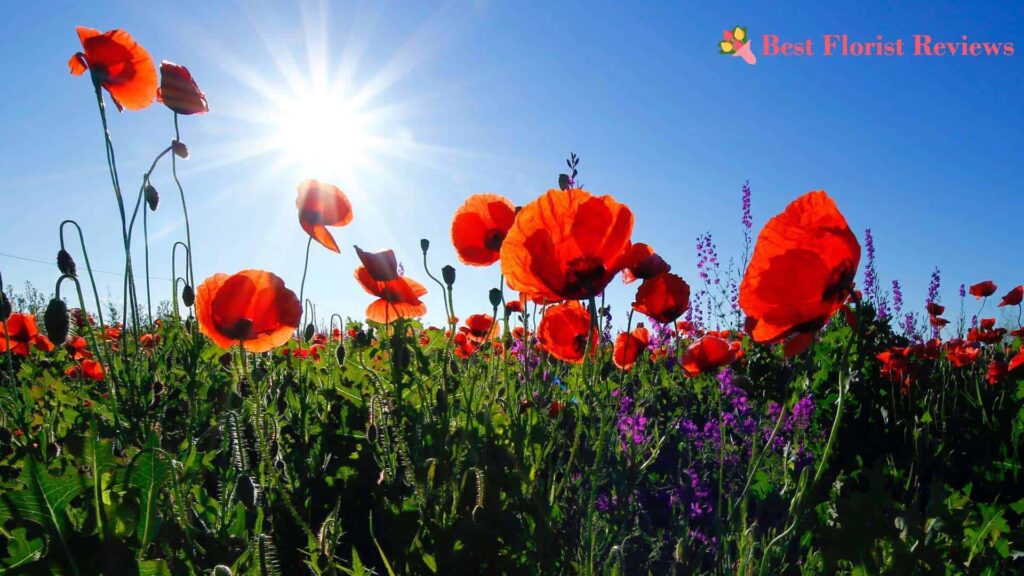

Since there are numerous species of poppy flowers, it’s tricky to pin down just one place to which they are native. In fact, it’s the opposite: different kinds of poppies are native to several countries and regions all over the world.
The common poppy, also known as the red poppy, is native to most countries in Eurasia—specifically Central Europe—and North Africa. But you can also find many variants of poppy flowers in the United States, specifically in California.
When are poppy flowers in season?
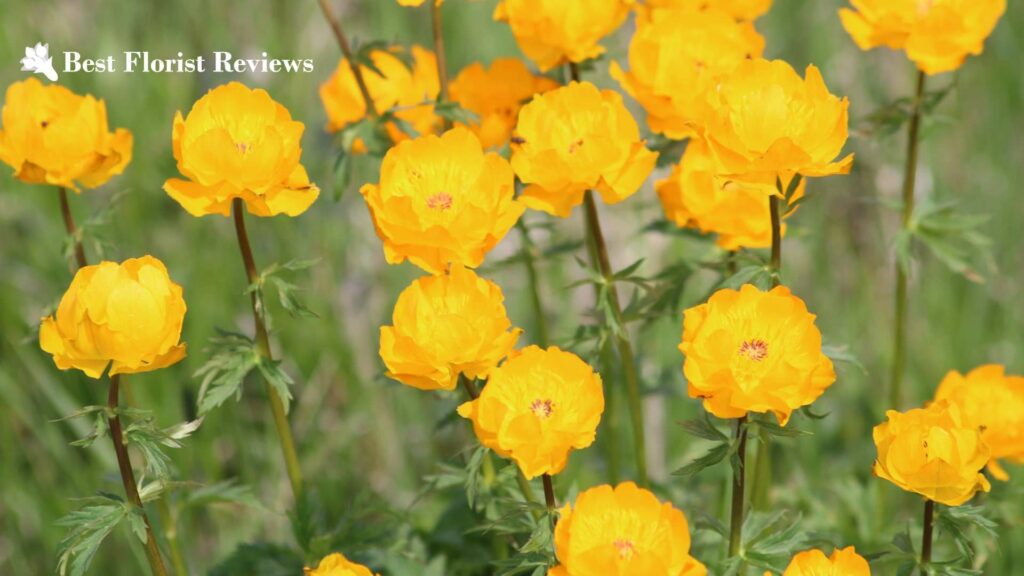

When poppies are in season highly depends on the species, their hardiness zone, and their location. That said, they do tend to thrive in cooler conditions, so late winter to early summer is the blooming time for many poppy species.
If summer nights remain cool, it’s possible for poppies to continue blooming even deeper during the said season.
What does “hardiness zone” mean?
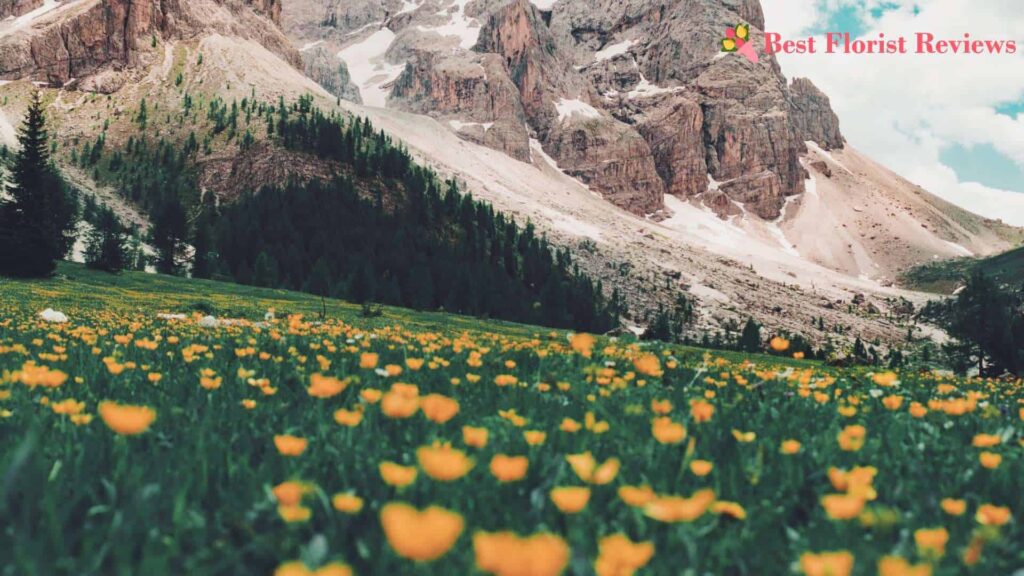

When we’re talking about different species of poppies—or any kind of plants—the “hardiness zone” is often mentioned. Essentially, a “hardiness zone” refers to a geographic area that’s defined by its average annual minimum temperature.
Currently, the most widely used scale is the one developed by the United States Department of Agriculture (USDA). There are 13 zones, as shown below:
How many species of poppy flowers are there?
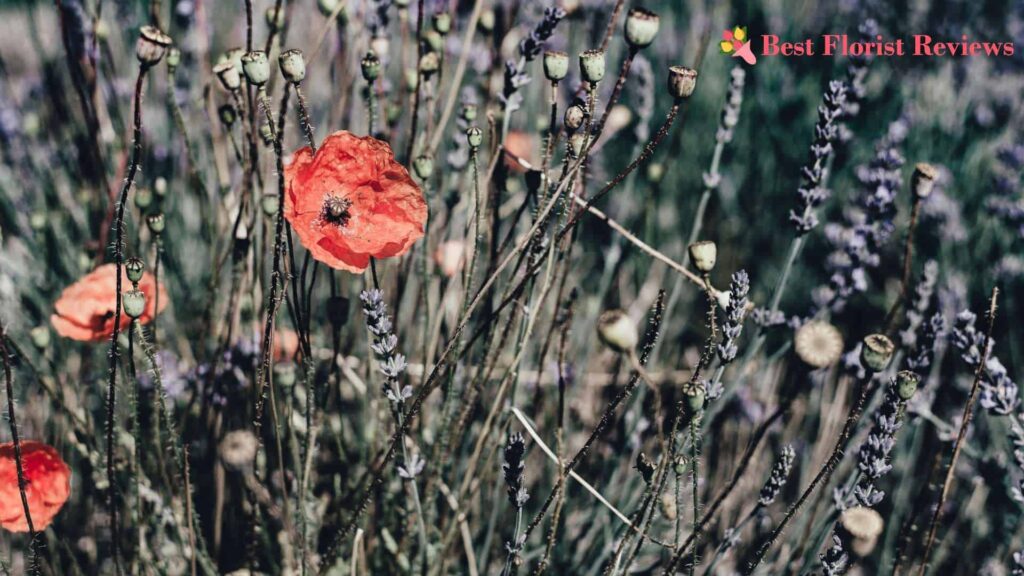

The Papaveraceae family is quite a large one. It has about 42 genera and about 775 known species of flowering plants, including poppies.
If we narrow our focus to Papaver, one of the genera dominated by poppies, then we can say that there are over 120 species of poppy flowers that we see in the world today.
What are some of the most popular species of poppy flowers?
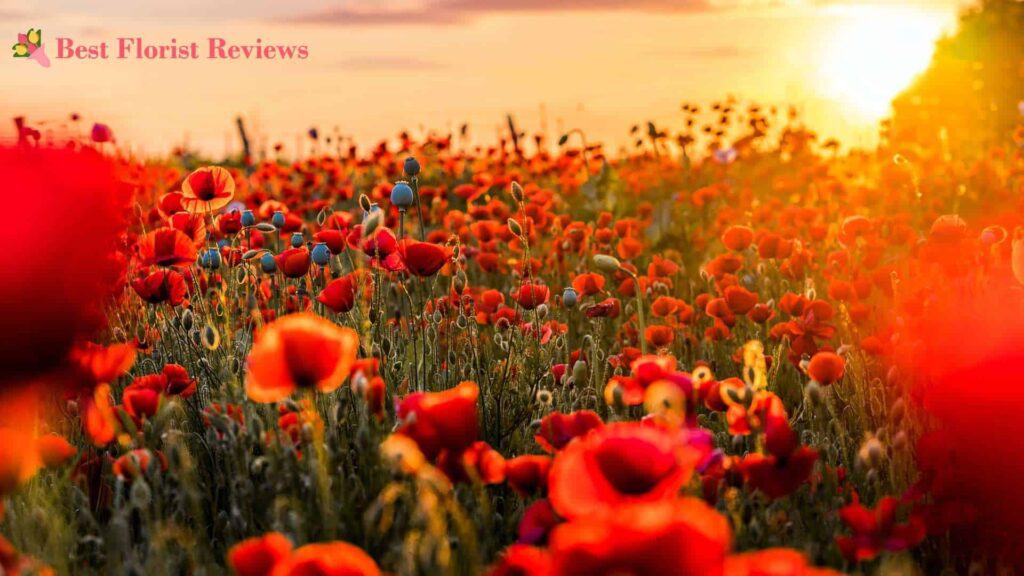

As mentioned earlier, there are hundreds of poppy flower species, so it’s impossible to enumerate every single one in existence. That said, there are some species that have gotten popular throughout the years for various reasons.
If you’re curious about which ones to buy next time you go to a florist, here are some of the most popular species of poppy flowers:
Common Poppy
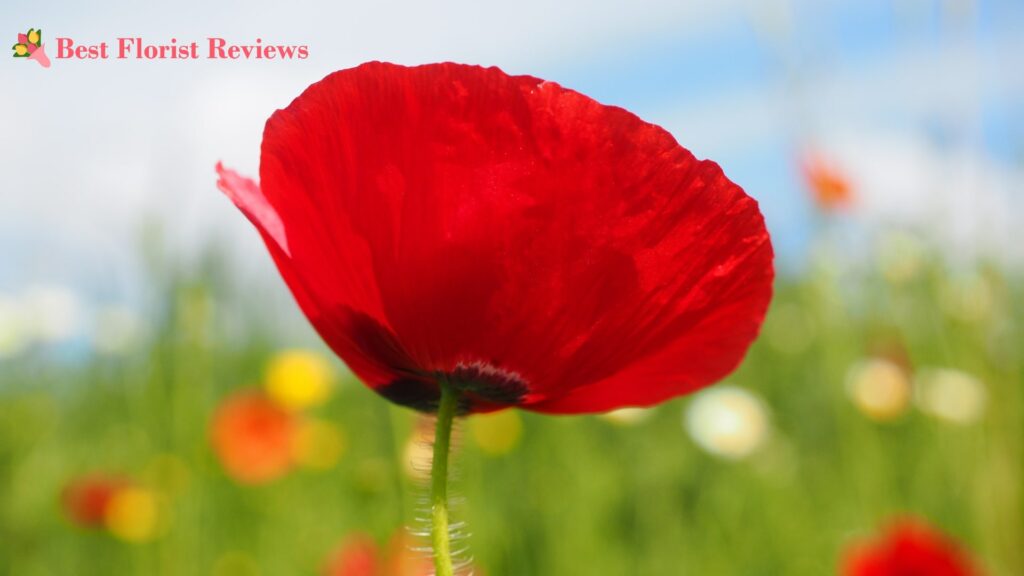

- Binomial Name: Papaver rhoeas
- USDA Hardiness Zone(s): 1–10
- Mature Height: 9–18 inches
As the name suggests, the common poppy is the most well-known species of this flowering plant. It can be found everywhere, especially in Africa, Asia, and Europe.
For this reason, it has a variety of alternate names, including corn poppy, corn rose, field poppy, Flanders poppy, and red poppy. It also comes in so many colors: red is the most popular, but other colors include orange, pink, violet, white, and yellow.
This is why common poppies are a popular choice for bouquets: their color variety makes for a vibrant and eye-catching bunch.
Opium Poppy


- Binomial Name: Papaver somniferum
- USDA Hardiness Zone(s): 3–8
- Mature Height: 3–4 feet
Another popular species of poppy flower is the infamous opium poppy. This glaucous plant is technically considered a garden poppy, but many of its varieties are the sources of heroin and other opiate drugs—hence the notoriety.
Luckily, there are many other varieties under Papaver somniferum that don’t produce a significant amount of opium. So, you can still buy a bouquet of them from your local shop!
The opium poppy’s blue-purple flowers are eye-catching, which is why many opt to buy them to decorate their houses. In addition to this, this poppy is also known for its edible seeds and oil, which can be used in cooking pastries and other delicious dishes.
Alpine Poppy
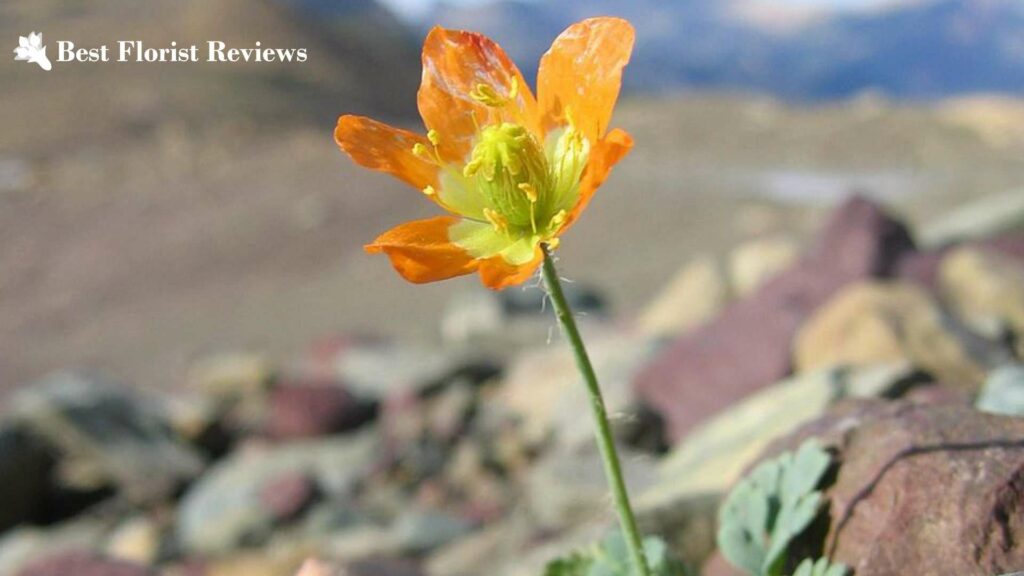

- Binomial Name: Papaver alpinum
- USDA Hardiness Zone(s): 2–6
- Mature Height: 2–8 inches
As you can gather from the name, the alpine poppy is mostly found throughout the Alps. In other words, this species thrives on calcareous rocky ground that’s thousands of meters above sea level, making it sturdy against extreme weather and drought.
In terms of appearance, the alpine poppy has a basal, stout rosette, and it bears four petals that are either white or yellow in color. Alpine poppies start flowering between July and August, and they’re perennial plants, so they can last more than two years.
Great Scarlet Poppy
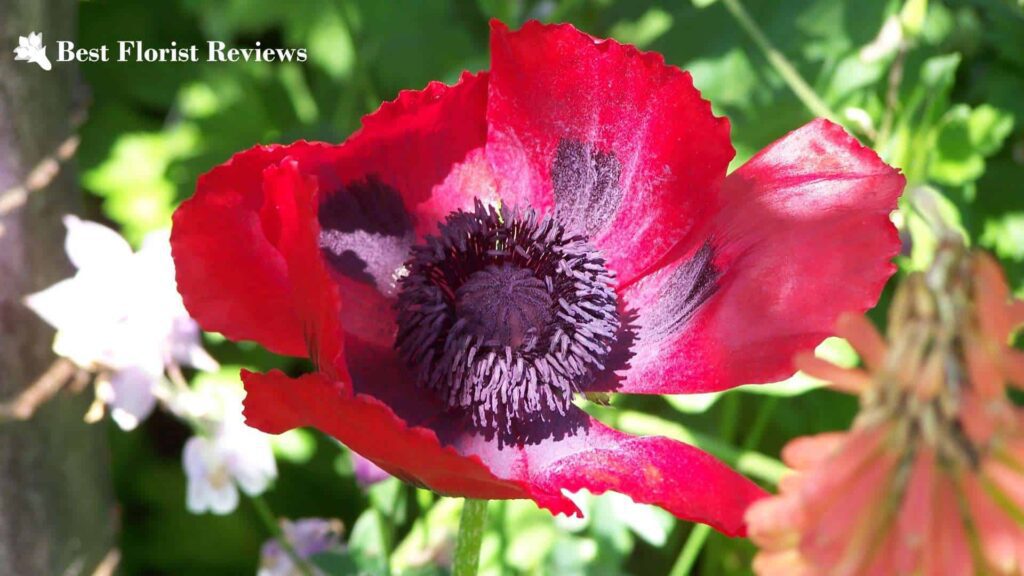

- Binomial Name: Papaver bracteatum
- USDA Hardiness Zone(s): 4–9
- Mature Height: 18–48 inches
Papaver bracteatum boasts huge, ruby-red flowers that can grow 18 to 48 inches tall and four to eight inches across. Because of this bright and showy appearance, this particular poppy species is also known as the great scarlet poppy.
This poppy also has another name—the Iranian or Persian poppy—simply because it’s native to Iran as well as to other lands in the Caucasus region.
The great scarlet poppy blooms in the spring and summer, so be sure to check your local shops when this flower is finally in season. A few great scarlet poppies will surely add a splash of color to your house.
Oriental Poppy
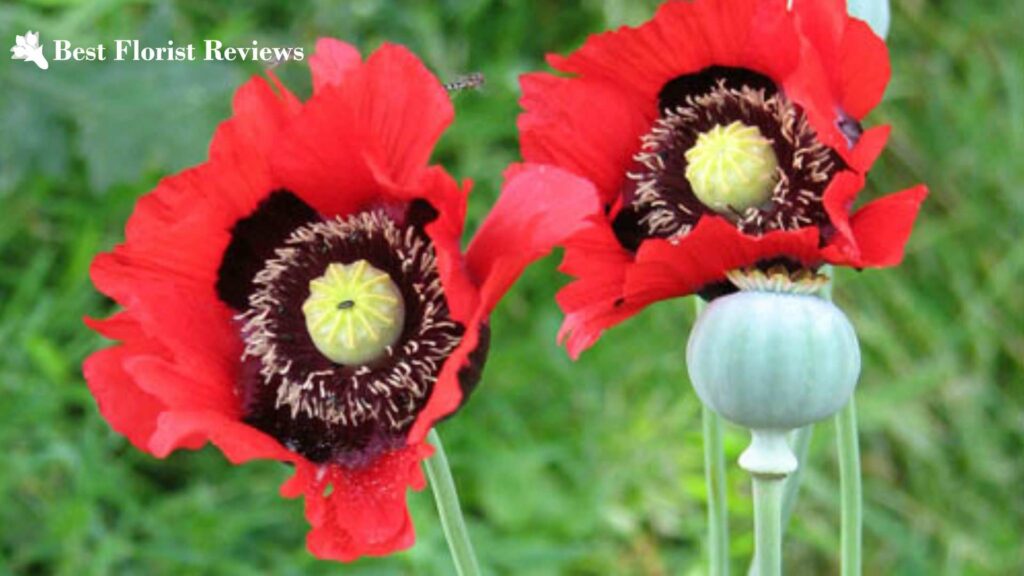

- Binomial Name: Papaver orientale
- USDA Hardiness Zone(s): 3–9
- Mature Height: 20–36 inches
The oriental poppy is a perennial garden plant known for its feathery foliage and bright, colorful flowers. Just like the great scarlet poppy, the oriental poppy is native to Asia, especially in Armenia, northern Iran, and northeastern Turkey.
There are several varieties of the oriental poppy, and each has its own name and striking characteristics:
- Beauty of Livermere: known for its blood-red flowers and black basal spots
- Harvest Moon: featuring bright orange flowers and the plant has a spreading growth habit, so it can be wide as it is tall
- Marlene: small, burgundy flowers and the plant’s height can reach about 28 inches
- Patty’s Plum: originated in England and known for its striking purple flowers
- Pink Perfection: radiant pink petals with wavy edges and black base spots
- Princess Victoria Louise: salmon-pink flowers with black spots
- Royal Wedding: pure white flowers with a purple basal spot
Iceland Poppy
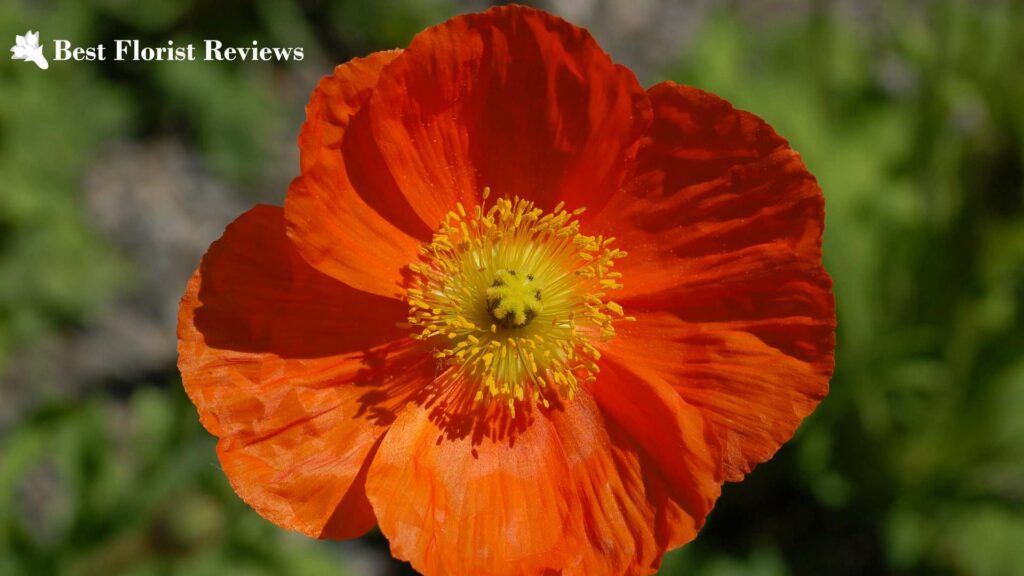

- Binomial Name: Papaver nudicaule
- USDA Hardiness Zone(s): 2–7
- Mature Height: 12–24 inches
Unlike its perennial siblings that can survive in temperate and tropical climates, the Iceland poppy is a boreal flowering plant. In other words, this poppy is a short-lived perennial or an annual that thrives in countries with a subarctic climate.
Iceland poppies are large, bowl-shaped, and lightly fragrant. If left to the wild, these blooms typically come in either yellow or white, but the cultivars can yield even more colors, such as orange, salmon, rose, and pink.
Spanish Poppy
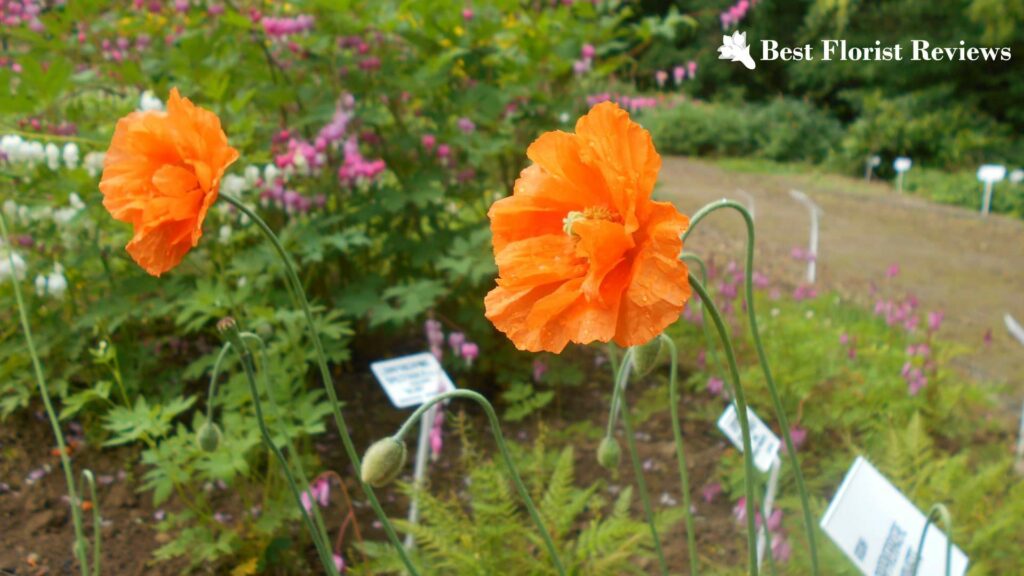

- Binomial Name: Papaver rupifragum
- USDA Hardiness Zone(s): 6–10
- Mature Height: 12–18 inches
The Spanish poppy is best noted for its profusion of semi-double, soft orange flowers. It’s also quite a robust plant since it can survive droughts, sunny locations, rocky plains, and even extreme cold.
Because of this, this is a popular flower choice for gardeners.
Non-gardeners also take delight in the Spanish poppy because it makes for a wonderful house plant. Just think of how beautiful it will be to have this flower on your dining table vase!
Dwarf Poppy
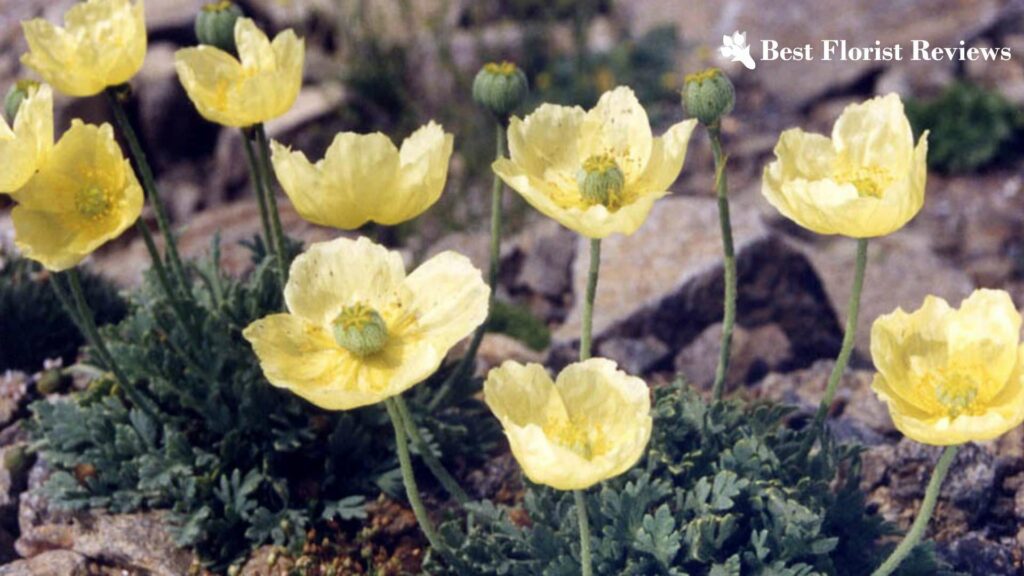

- Binomial Name: Papaver miyabeanum
- USDA Hardiness Zone(s): 5–7
- Mature Height: 4–6 inches
The dwarf poppy may be small in comparison to its fellow poppies species, but it’s still just as lovely and beautiful. It features a bowl shape, and its flowers are pale lemon yellow in color.
Another good thing about this flower is that it’s frost-hardy and wintergreen. They can survive cold regions, rocky terrains, and steppes.
So, if you want to buy flowers during wintertime, dwarf poppies are a great choice.
Himalayan Poppy
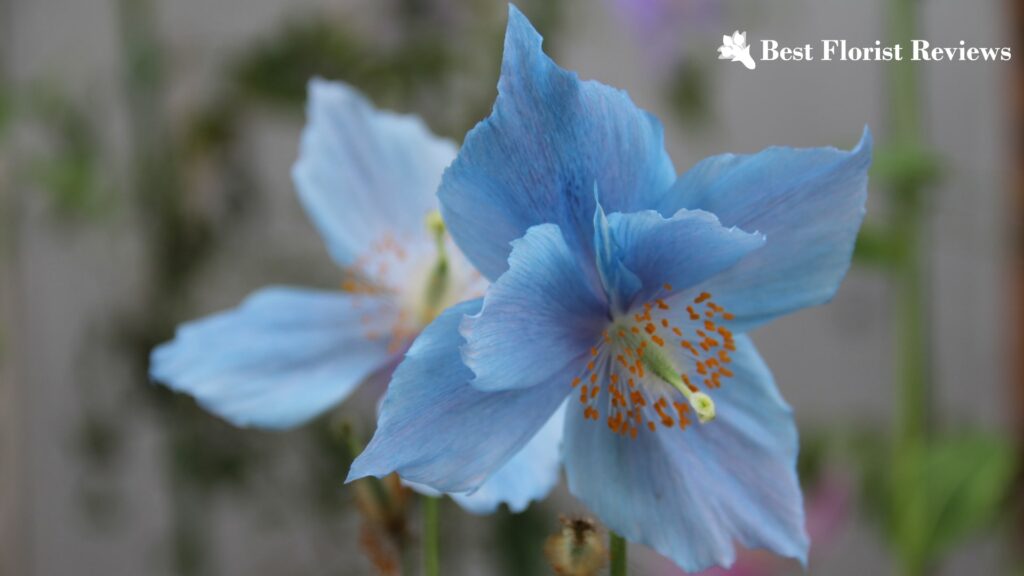

- Binomial Name: Meconopsis grandis
- USDA Hardiness Zone(s): 3–7
- Mature Height: 3–4 feet
Unlike the other poppies mentioned in this list, Himalayan poppies actually aren’t under the Papaver genus. That said, they are still technically poppies because they fall under the Papaveraceae family.
Native to the Himalayas, Himalayan poppies feature large, papery blooms with a sky-blue hue. Their simple yet delicate appearance has captivated many people worldwide.
California Poppy
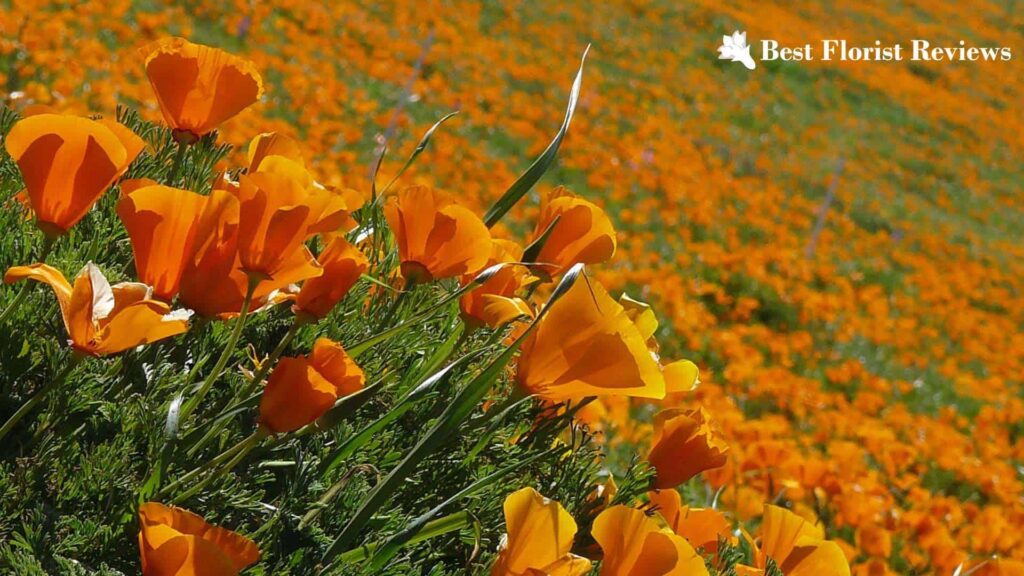

- Binomial Name: Eschscholzia californica
- USDA Hardiness Zone(s): 6–10
- Mature Height: 12–18 inches
Another poppy that isn’t under the Papaver genus, the California poppy is native to the United States and Mexico. Its flowers are cup-shaped and bear brilliant shades of red, yellow, orange, and occasionally pink and white.
Since this poppy species is one of the easiest to grow—it’s inexpensive and quite adaptable since it can grow even in poor soil—it’s also one of the most popular poppies among buyers.
Though buyers predominantly use Californian poppies as decorations in their houses, some have used the flowers as food or garnish.
Because of its vibrant colors, the California poppy has garnered other names, such as the golden poppy, California sunlight, and cup of gold. Additionally, this poppy is the official state flower of California.
What’s the meaning and symbolism behind poppy flowers?


Generally speaking, poppy flowers are used to symbolize peace. With that meaning, poppies are placed on tombstones because they’re believed to bring eternal sleep.
Additionally, poppies are a symbol of death and sacrifice for the greater good. They are used to commemorate the people who died during World War I.
The symbolism can also vary depending on the color of the flowers.
- Blue: faith, a symbol of remembrance in France
- Purple: animal victims of war
- Red: respect and solemnity for fallen soldiers
- Black: symbol of remembrance for the contributions of Africans and Caribbeans during wars in the 16th century; also represents pride, honor, and glory
What’s the cultural significance of poppy flowers?
Poppies are significant symbols in several cultures all over the world. They are such fascinating flowers that the Ancient Greeks associated them with gods and the Ancient Egyptians used them in funeral rites.
Mythology


A common symbolism associated with the poppy is eternal sleep, and Greek mythology is one reason why this association is widely believed. In this mythology, poppies were connected to both Hypnos and Morpheus, the gods of sleep and dreams respectively.
In several depictions, Hypnos and his twin Thanatos (god of death) are shown wearing a crown of poppies. Meanwhile, the drug morphine, which is made from opium that’s extracted from poppies, is named after the Greek god Morpheus.
It’s also believed in Greek mythology that when Demeter was distraught after her daughter Persephone was abducted by Hades, the gods gave her poppies to help her sleep.
Moreover, the poppy is also present in ancient Egypt. To be more specific, many mummy garlands in the tombs were identified as poppies, so it’s safe to assume that it was part of the ancient Egyptians’ custom to bury their dead with this particular flower.
War
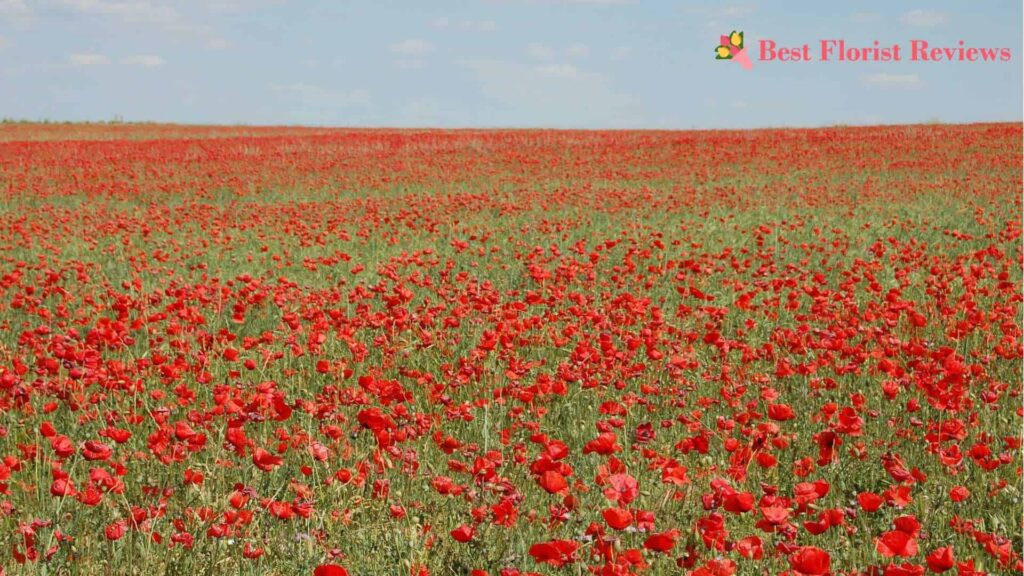

As mentioned earlier, poppies have now become a symbol of remembrance for those who fell during wars. The backstory as to how this symbolism came about can be traced back to the Napoleonic Wars in the 19th century and World War I.
During these wars, numerous fields were destroyed because of battles, and the first plants that would eventually regrow after the destruction were poppy flowers. This is because the rubble was rich in lime deposits, making the soil perfect for poppies.
This image of poppies growing on battlefields eventually became the inspiration for the poem “In Flanders Fields,” which was written by war veteran John McCrae.
Flander Fields is the term used to refer to the battlegrounds in Belgium and France, and in the poem, John McCrae describes how poppies grow over the graves of the fallen soldiers.
Eventually, this poem became popular. It’s now one of the most quoted poems from the war—which is why the poppy has now become the symbol of remembrance. Poppies, especially the red ones, are typically worn during Memorial Day.
Others
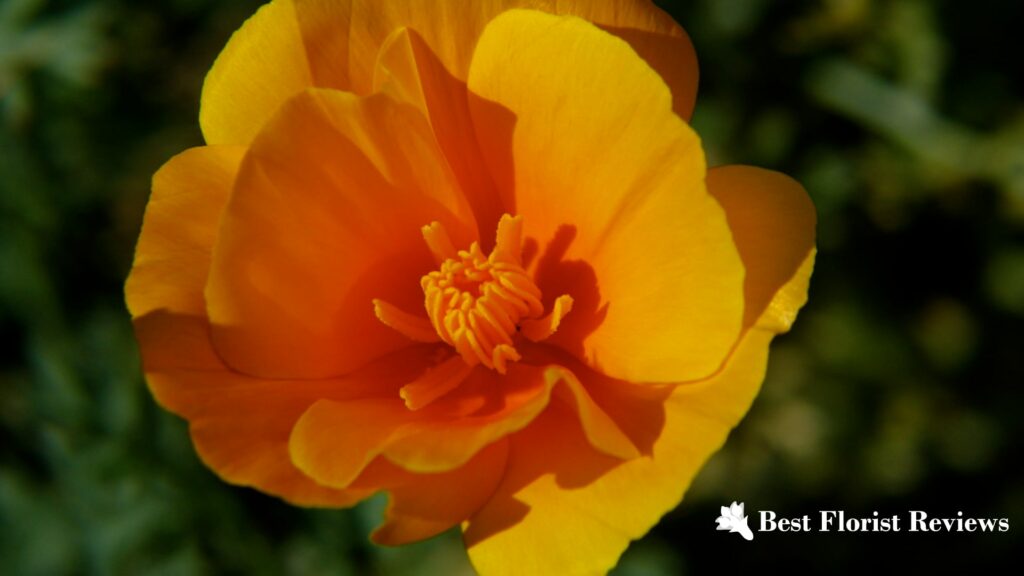

The poppy flower is also featured in several cultural items in other countries. For example, the Macedonian 500-denar banknotes issued in 1996 and 2003 had a poppy on the reverse; the flower is also featured in the coat of arms of North Macedonia.
The red poppy has also appeared on the reverse of Canadian special quarters, which are issued in 2004, 2008, 2010, and 2015. In California, USA, the official state flower is the Californian poppy.
What are the uses and benefits of poppy flowers?


Poppy flowers aren’t only known for their cultural significance and symbolism. They’re also quite beneficial in various fields.
To be more specific, you can find several uses for poppy flowers in gardening, medicine, skincare, and cooking.
When can you give someone poppy flowers?


There are many occasions and events that are perfect for giving poppy flowers to someone. Birthdays and funerals are two examples, but you can also give a bouquet of poppies during other celebrations as well.
How do I take care of poppy flowers?
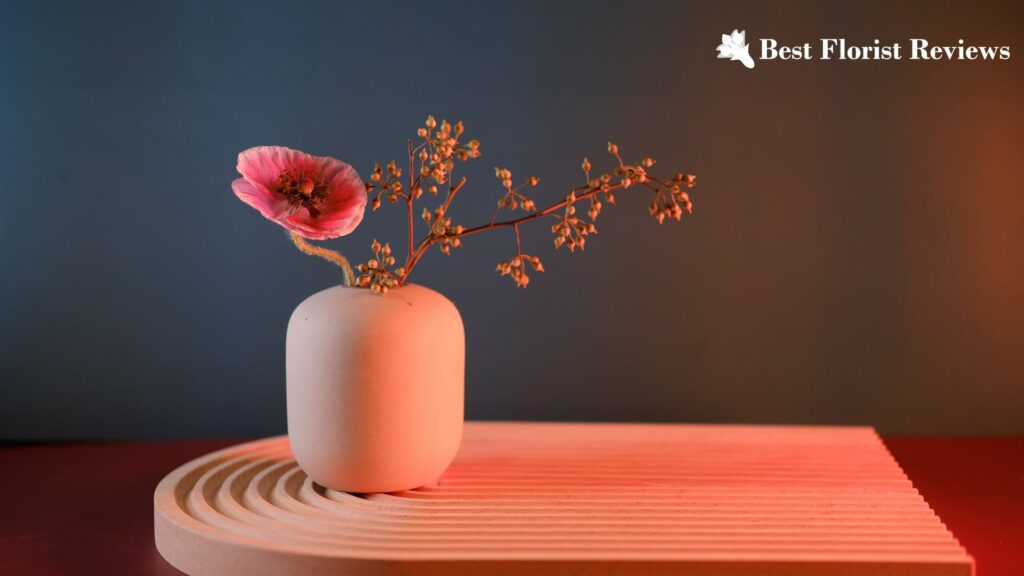

Poppies are pretty flowers, but they don’t last long when you put them in a vase. In fact, you only have a few days before they start dropping their petals.
For this reason, you need to take care of the poppies so that they last for as long as possible. And luckily, it’s relatively easy to take care of them.
Here are some tips to keep in mind:
- Keep the poppy flowers in water for at least eight hours—but preferably overnight. This will keep them hydrated.
- Seal the stems to avoid the milky sap in the stem from escaping. There are different ways to do this: 1) you can use a match or lighter to seal the cut end or 2) place the end of the stem in hot water for roughly 30 seconds.
- Refill the vase with fresh water every couple of days.
- Put the vase of poppies in a cool area that’s not in direct sunlight.



